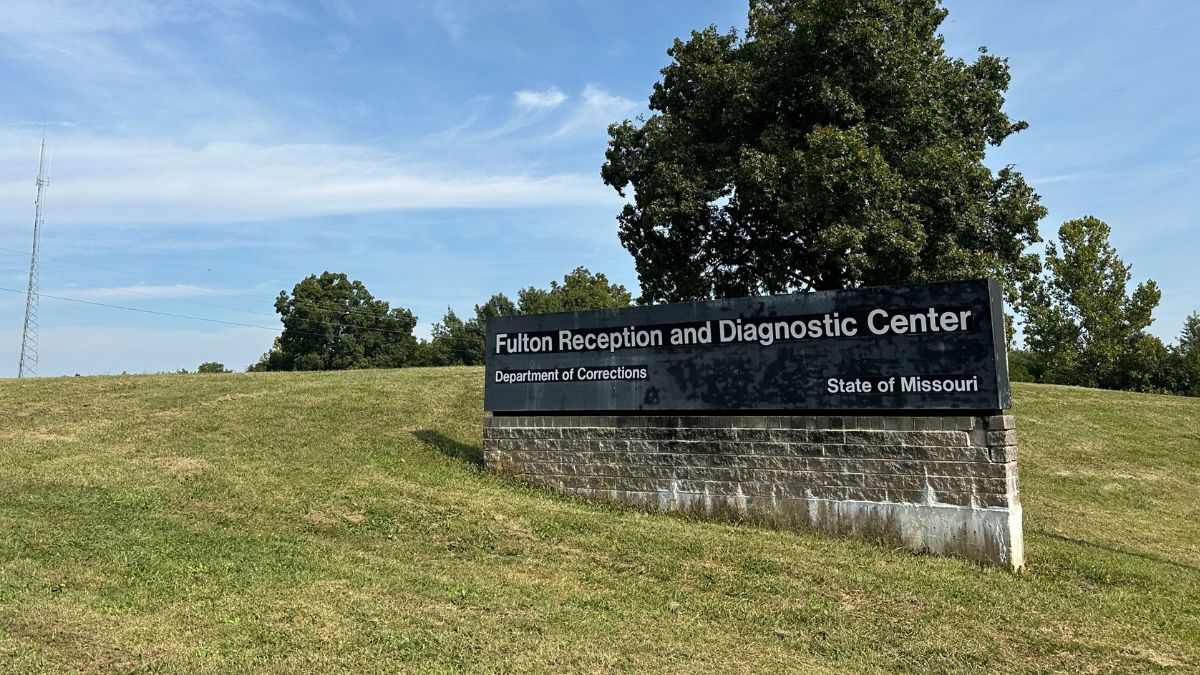10:00
News Story
Air conditioning is coming to some Missouri prisons. But it will take years and cost millions
The Missouri Department of Corrections had a $14 million budget allocation to install air conditioning at one of its intake facilities. It will take years for the project to be completed
Missouri lawmakers took a step toward improving conditions in some Missouri prisons last year by setting aside millions to install air conditioning in one of the state’s 17 prisons. That cooler air is still a year and a half away.
That decision came as global temperatures broke summertime heat records. Prisoner rights advocates celebrated the state’s decision to install air conditioning at the Fulton Reception and Diagnostic Center, one of Missouri’s intake correctional facilities.
The Department of Corrections estimates that they’ll be responsible for housing over 20,000 men and women throughout the course of 2024. Of those, up to 9,200 could live in prisons where there is partial or no access to air conditioning in housing units. And as Missouri closes out its third-hottest summer on record, the calls to fully air condition Missouri prisons grow louder.
Those living in the prisons contend the hotter summers make conditions inhumane.
It’s a trend that worries prison reform advocates in Missouri.
“We are extremely concerned about DOC’s ability to cope with what continue to be record-breaking temperatures of extreme heat in Missouri this summer,” said Shubra Ohri, senior counsel at the MacArthur Justice Center.
Of the 17 Missouri prisons, 10 are fully air conditioned. Four have partial access to air conditioning in some administrative areas and some housing units.
The remaining three facilities do not have air conditioning in housing units, mostly because there are no air ducts, the department says.
Missouri lawmakers have taken note. In the state’s 2024 budget, they allocated $14.3 million to install air conditioning at Fulton. The building opened in 1987 and has a capacity for 1,255 men.
It’s commonplace for U.S. prisons to have only partial air conditioning. Many prisons across the country only air condition areas like medical units, visitors’ areas or staff cafeterias.
Last summer, the Department of Corrections responded to complaints of heat inside the Fulton facility with the promise of air conditioning. But the project, which department spokesperson Karen Pojmann called extensive and complicated, won’t be complete until January 2026.
The installation of air conditioning is still in the pre-design phase, budget documents show.
The DOC has alternate ways to cool down prisoners in places without air conditioning. They distribute ice three times a day and offer water and cool showers. Inmates also can purchase fans from the commissary for about $20.
But inmates say those measures fall short. Ice can melt quickly and distribution can be contingent on the amount of staff available, said one inmate at Ozark Correctional Center, which does not have air conditioning.
Fans are available to purchase from the commissary if inmates can afford them outright. Or, inmates can get on a “fan plan” where they pay a few dollars a month to pay off the purchase.
It’s one of the few interventions available. But research shows that at temperatures above 99 degrees, fans can cause more harm than good.
Blowing air that is hotter than the average body temperature can increase sweat evaporation and make it easier for people to fall into a heat-related medical incident, like heat exhaustion or heatstroke, the Environmental Protection Agency found. The agency discourages fans from being used in those instances.
The same problem comes with using misters. In hot and humid conditions, misters can subtract from the body’s ability to use sweat to cool itself.
The difficulty of keeping cool in Missouri prisons
Prisons are particularly difficult to cool, according to Cascade Tuholske, a researcher at Montana State University who co-authored a study about temperatures in U.S. prisons.
They are often built where land prices are low and weather conditions aren’t ideal, Tuholske said. They often lack air flow and are built out of materials, like concrete, that tend to absorb heat, making it more difficult to cool the inside.
From 1982 to 2020, his research found that jails and prisons were exposed to an average of 5.5 more days per year where the wet bulb globe temperature — which accounts for temperature, humidity, wind speed and other factors — exceeds 82.4 degrees Fahrenheit.
It is difficult to track what medical incidences are related to heat in prisons, said Julie Skarha, a epidemiologist at Brown University who has studied heat-related medical events in Texas prisons. Other health conditions make it difficult to attribute a death or medical event to just one cause, but her research found that deaths rise in prisons without air conditioning.
“It’s never a perfect measurement, but I still see an increased risk of deaths in prisons without air conditioning,” Skarha said. “Even if I am using an estimate of what the temperature someone was actually exposed to. And so I think it’s probably an underestimate in a lot of ways.”
High temperatures can present a risk for people with underlying health conditions or those who are elderly, research shows. And those groups tend to be overrepresented in the nation’s prison population.
DOC statistics show that just over 24% of the state’s inmate population was over 50. The percentage of people over 50 in Missouri prisons has increased 6% from 2014 to 2023.
Age is a data point that stands out in Skarha’s research.
“The risk of dying on a very hot day increases with age,” Skarha said. “And then I also find a delayed effect with suicide. After a really an extreme heat day, suicides increase about two days later, and they increase by 20%.”
Taking psychotropic medications can impact the body’s ability to regulate temperatures in extreme weather. It’s a trend in especially hot states for inmates to occasionally quit taking their medications during periods of extreme heat, which can lead to an increase in suicide attempts.
The head of the union that represents correctional officers in Texas noted in a 2018 report that suicide attempts rose in the summer months as prisoners tried to avoid heat-related illness by pausing their medications.
Last summer, Texas prisons reported 35 employees who had heat-related incidents, but only 14 among prisoners. The Texas Department of Criminal Justice has paid out over $500,000 in workers’ compensation claims to employees for heat-related illnesses since 2006.
This article first appeared on Beacon: Missouri and is republished here under a Creative Commons license.![]()
Our stories may be republished online or in print under Creative Commons license CC BY-NC-ND 4.0. We ask that you edit only for style or to shorten, provide proper attribution and link to our website. AP and Getty images may not be republished. Please see our republishing guidelines for use of any other photos and graphics.





